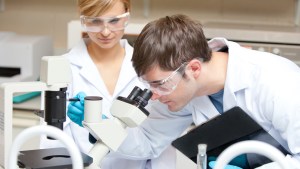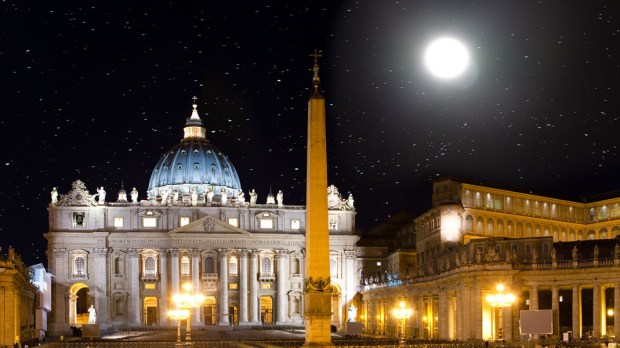Lenten Campaign 2025
This content is free of charge, as are all our articles.
Support us with a donation that is tax-deductible and enable us to continue to reach millions of readers.
When you look at the moon, what do you see? The Man in the Moon? The Chinese goddess Chang’e and the Jade Rabbit? Peter Pan’s ship sailing to Neverland?
Did you know that the Catholic Church has made its mark not only at the ends of the earth, but also in outer space?
35 craters on the moon are currently named for Jesuit astronomers, physicists and mathematicians. Since 1645, selenographers, who map the surface of the moon, have been naming lunar craters after prominent Jesuit scientists, and at one point 40 craters bore Jesuit eponyms. Michel Florent van Langren created the first true map of the Moon in 1645:
Many of the features were given names that had a distinctly Catholic religious character, using the period names of Catholic royalty for craters and the names of Catholic saints for the capes and promontories. The maria were given Latin names of seas and oceans. Minor craters were given the names of astronomers, mathematicians, and other notable scholars of the past and present periods.
Jesuit astronomers Giovanni Battista Riccioli and Francesco Maria Grimaldi continued this lunatical custom, publishing a selenograph in 1651 which formed today’s scheme of lunar nomenclature.
As science historian J.L. Heilbron noted in The Sun in the Church,
“The Roman Catholic Church gave more financial and social support to the study of astronomy for over six centuries, from the recovery of ancient learning in the late Middle Ages into the Enlightenment, than any other, and probably, all other, institutions.”
This is because our holy days and the date of Easter are determined by precise astronomical observations.
Read more:
A Catholic priest, Fr. Georges Lemaître, is “Father of the Big Bang Theory”
The Society of Jesus has been a powerhouse of scientific and missionary endeavor. After St. Ignatius of Loyola founded the Society, nearly 1,000 priests, brothers and novices were sent throughout Italy, Spain, France, Germany, Portugal, Brazil, Ethiopia, India and Japan in his lifetime. They established universities which were admired for their scientific rigor, and have served as directors of the Vatican Observatory.
Fr. Joseph MacDonnell, S.J., has painstakingly recorded the details of each Jesuit lunar crater at the Fairfield University Jesuit Resource Page.
The largest crater on the near side of the moon is Clavius, named for Christopher Clavius, S.J. (1538-1612), who along with Aloysius Lilius devised the Gregorian Calendar, the internationally accepted civil calendar we use today, which was promulgated in 1582 by Pope Gregory XIII. Clavius was a renowned Renaissance teacher who supported the heliocentric planetary theory and helped Galileo attain a professorship in the University of Pisa. He wrote astronomy books that served as standard university texts throughout Europe in the late 16th and early 17th centuries. It is ironic that Clavius has a crater named after him, because he had reservations about the existence of lunar craters and mountains, as the edges of the Moon appear perfectly round. (Shea and Artigas, Galileo in Rome)
Another crater on the near side of the moon is Riccius, southeast of the crater Rabbi Levi. Riccius is named for Matteo Ricci, S.J. (1552-1610), who was a famous missionary to China and introduced Western science and mathematics to the Middle Kingdom.
Of course, there have been many non-Jesuit Catholic scientists, and some craters are named for them, too. To the east-northeast of Riccius is Stiborius, named for the German priest Andreas Stöberl, a humanist astronomer, mathematician, and theologian who worked mainly at the University of Vienna.
Besides that, the dark, flat regions of the moon are known as maria, the plural of the Latin word for “sea.” This lunar nomenclature would strike a chord with Catholics, for Mary is described as “fair as the moon” (Song of Songs 6:9, used in the Legion of Mary Catena prayer), and identified with the woman in Revelations 12:1, with the moon under her feet. The moon has been used in Marian imagery since the 14th and 15th centuries, a development of a 9th-century motif representing the Church.

Read more:
Can a scientist be Catholic? A Conversion Story
Venerable Archbishop Fulton Sheen said: “God who made the sun, also made the moon. The moon does not take away from the brilliance of the sun. All its light is reflected from the sun. The Blessed Mother reflects her Divine Son; without Him, she is nothing. With Him, she is the Mother of men.”
Perhaps we may even build a church on the moon someday – it is part of a diocese, after all: [Archbishop William Borders] was ordained bishop in 1968 and made the first Bishop of Orlando, Florida. The new diocese encompassed central Florida and included Cape Canaveral, from where, the following year, Apollo 11 launched, bound for the moon. After that historic launch and lunar landing, with all the images of our astronauts walking, golfing, and planting the flag, Borders made an ad limina visit to Rome to meet with Paul VI. During their meeting, Borders rather nonchalantly observed, “You know, Holy Father, I am the bishop of the Moon.” Pope Paul looked at him rather perplexed – probably wondering where along the line this American prelate lost his mind. Borders then continued by explaining that by the existing (1917) Code of Canon Law, he was the de facto ordinary of this “newly discovered” territory.
So, the next time you look at the moon, send up a prayer for all those Catholic scientists who have extended the frontiers of human knowledge, and be inspired on your baptismal mission to bring the Gospel to all, reflecting Christ’s light in their darkness, until the dawn of God’s new creation.
Jean Elizabeth Seah writes from Brisbane, Australia.

